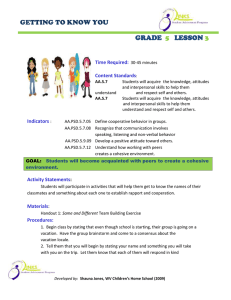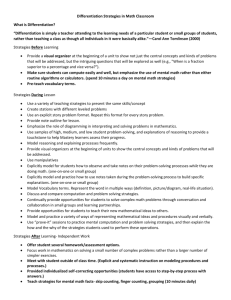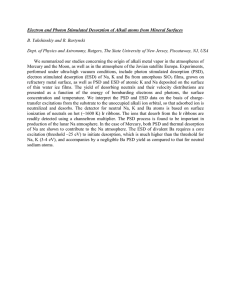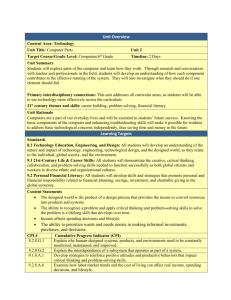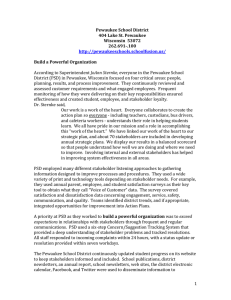Post-Incident Interviewing
advertisement
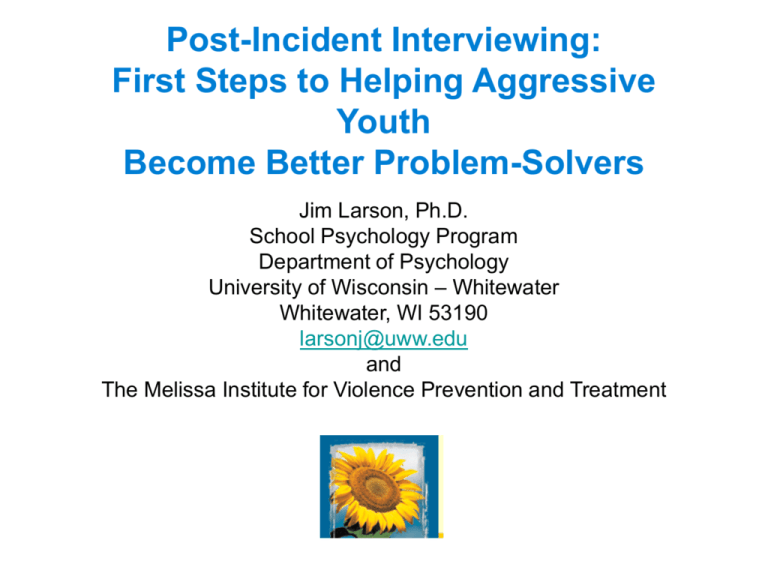
Post-Incident Interviewing: First Steps to Helping Aggressive Youth Become Better Problem-Solvers Jim Larson, Ph.D. School Psychology Program Department of Psychology University of Wisconsin – Whitewater Whitewater, WI 53190 larsonj@uww.edu and The Melissa Institute for Violence Prevention and Treatment Angry students frequently… believe in their own “rightness” place emotional responsibility on others fail to take the perspective of others fail to generate alternative explanations fail to consider alternative responses But, angry students can… engage a helping adult collaboratively make connections among thoughts, feelings, and behavior consider other’s perspectives in causal explanations generate at least one other alternative solution enact new behaviors with support Working with Individual Students General Considerations Establish collaborative relationship How can we work together? Respect the youth’s perspective Get student to convince you of its authenticity Take a solution-focused approach Instill hope, a way out Foster responsibility Enact a plan Problem-Solving Discourse A “Phase-Oriented Problem-Solving” process to help angry youth become better problemsolvers; Follows a “discovery training” model Helps teach a variety of coping skills and problem-solving vocabulary Problem-Solving Discourse PHASE I - PREPARATION PHASE II - PROBLEM-SOLVING PHASE Collaborative alliance, defuse emotions, obtain timeline of aggressive event Consider and develop more prosocial alternatives and assume more responsibility PHASE III - IMPLEMENTATION Practice and apply new skills PSD PHASE I - PREPARATION If necessary, defuse the situation and deescalate the anger Explore the “what, when, where, who” of the present incident – “mental videotape” Conduct a behavioral chain analysis that connects feelings, thoughts and behaviors How did you feel when that happened to you? What went through your mind at that point PSD PHASE I - PREPARATION Emphasize choice behaviors Summarize client’s view of the event How did you come to choose (decide) to do … ? What happened after you made the choice to …? Correct me I’m wrong, but what I hear you saying is… Nurture hopefulness, a way out Let's see if we can make sense of what happened to you PSD PHASE II - PROBLEM SOLVING Help the client take the perspective of others What was going through her head when she saw you? If you were thinking that, would you have done the same thing? Help the client generate causal explanations Why do you think he got so mad about that? It sounds like the problem that got you sent here isn't the whole story. What else is bothering you? PSD PHASE II - PROBLEM SOLVING Help the client generate alternative solutions Help the client notice warning signs What other ways are there to try to solve the problem? Can you think of a different way so X wouldn’t happen? How can you (or others) tell when you are first getting upset ? Foster responsibility (ownership) PSD PHASE III - IMPLEMENTATION Covey a “challenge” and bolster self-confidence Generate an action plan This might be really difficult. Can you do it? I believe you are mature enough to face this What advice would you have for a friend who has this same problem? What has worked for you in the past? Help anticipate consequences If you do…what do you think will happen? PSD PHASE III - IMPLEMENTATION Help anticipate barriers Let’s suppose that… How can you remind yourself to…? Reinforce effort Help student see the connections between action and outcomes and how he/she will benefit Why is it important for you to stay out of trouble? Do you think you can teach what you have learned to someone else? Download the Manual The Problem Solving Discourse Manual is available for free download at TeachSafeSchools.org, a website of The Melissa Institute to provide research-based school violence prevention procedures for educators: http://www.teachsafeschools.org/problemsolving.html Review the video at: http://facstaff.uww.edu/larsonj/schoolofpsych/



